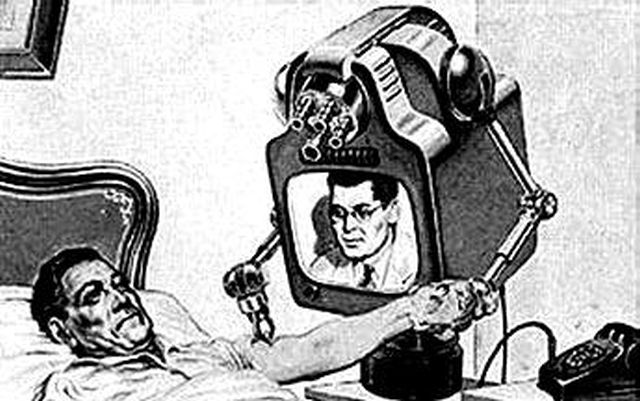Checking Out the Advantages and Challenges of Teledoctors in Modern Medical Care
As the healthcare landscape progresses, teledoctors have actually arised as an essential part in bridging voids in clinical gain access to and efficiency. Exactly how can the medical care industry equilibrium these advantages with the integral challenges?
Expanding Accessibility to Care
Telemedicine has actually emerged as a pivotal development in contemporary healthcare, considerably increasing accessibility to take care of varied populaces. By leveraging digital modern technology, teledoctors have transformed the standard medical care delivery model, making it feasible for individuals in remote or underserved locations to obtain timely medical appointment. This evolution is particularly useful for people staying in rural areas, where the shortage of healthcare centers and professionals frequently leads to delayed or poor treatment.
Teledoctors are critical in connecting the space produced by geographical barriers. With virtual consultations, patients can access a wide array of medical care services without the demand for considerable travel.
The integration of teledoctors right into health care systems additionally sustains the monitoring of public wellness dilemmas by promoting fast response and triage. During pandemics, for instance, digital assessments decrease the concern on physical healthcare facilities, decreasing direct exposure risks for both people and doctor. As telemedicine continues to advance, it assures to reshape the landscape of health care availability, making it extra comprehensive and reliable.
Cost-Effectiveness of Teledoctors
The cost-effectiveness of teledoctors is a substantial variable driving their widespread fostering in medical care systems. By decreasing the requirement for physical facilities and in-person visits, teledoctors provide an even more inexpensive choice to standard medical care distribution.
Additionally, teledoctors assist in a more efficient use health care sources by decreasing unneeded emergency room sees and health center admissions. People can access timely examinations for minor ailments or follow-up care, which aids to ease the burden on overstretched medical care centers. This effectiveness not only results in set you back financial savings for doctor but likewise reduces the monetary stress on patients who may or else deal with costly health center bills.
Moreover, teledoctors can assist in taking care of persistent illness better by supplying consistent surveillance and prompt treatments. This positive approach can stop difficulties, consequently lowering long-lasting therapy costs. Generally, teledoctors present a practical solution to the escalating expenses of medical care, while keeping top quality treatment distribution.
Enhancing Client Ease
While cost-effectiveness plays a critical role in the surge of teledoctors, improving client ease stands as one more compelling advantage of this health care design. With the assimilation of teledoctors, people can bypass the traditionally taxing procedure of organizing and participating in in-person visits.
Additionally, teledoctors supply versatile organizing, allowing clients to set up appointments sometimes that best fit their professional and personal commitments. This adaptability is important for individuals balancing requiring job schedules or family members duties, guaranteeing that medical care can be incorporated seamlessly into their lives. Furthermore, the ability to accessibility doctor from the comfort of one's home can cause increased individual interaction and adherence to therapy strategies, as the obstacles to looking for treatment are minimized.
The benefit provided by teledoctors not just enhances the patient experience however additionally contributes to a much more reliable and responsive medical care distribution system, inevitably sustaining much better wellness results.
Dealing With Personal Privacy Concerns
Amid the growing fostering of teledoctors, personal privacy concerns become a considerable factor to consider. As health care progressively depends on digital platforms, guaranteeing the confidentiality of client info becomes paramount. The digitization of medical documents and making use of telecommunication innovations require durable security measures to shield delicate data from unauthorized accessibility and violations.
Health care companies need to abide by stringent regulations, such as the Wellness Insurance Coverage Portability and Accountability Act (HIPAA) in the USA, which establishes nationwide requirements for protecting clinical information. Compliance with such laws is essential in maintaining person depend on and ensuring their information is managed responsibly. Security of data, secure interaction channels, and normal audits check out here are some of the actions that can be carried out to improve data defense.
Regardless of these measures, difficulties persist. Cybersecurity dangers are developing, and medical care organizations have to continue to be vigilant to new vulnerabilities. In addition, informing both people and medical care service providers about finest techniques in data personal privacy is necessary. This includes recognizing the limitations of data and the importance of protected login qualifications. teledoctors.
As teledoctors come to be more essential to health care shipment, resolving personal privacy concerns is vital to make sure both the efficacy and credibility of these solutions.

Navigating the Digital Divide
Connecting the electronic divide is an essential challenge in the extensive adoption of teledoctors. teledoctors. This divide includes variations in accessibility to electronic modern technology, specifically among rural, low-income, and senior populaces. These teams frequently lack the essential tools, reputable web connection, or digital proficiency needed for reliable engagement in telehealth solutions. Subsequently, the benefits of teledoctors-- such as boosted availability and ease-- continue to be inaccessible for lots of people who might most profit from them.
In addition, efforts to support innovation for her latest blog low-income households can play a crucial role in ensuring equitable access. Medical care companies and community organizations need to collaborate to use electronic literacy programs, encouraging people to navigate telehealth systems with confidence.

Final Thought
The integration of teledoctors right into modern health care supplies considerable advantages, including boosted access to care, cost-effectiveness, and improved patient comfort. Nonetheless, challenges such as privacy worries, the electronic divide, and cybersecurity threats need to be addressed to optimize these advantages. By executing durable information security measures, enhancing electronic literacy, and making sure safe and secure technological facilities, the capacity of teledoctors can be totally realized, promoting equitable health care distribution and changing the medical care experience for all individuals.
